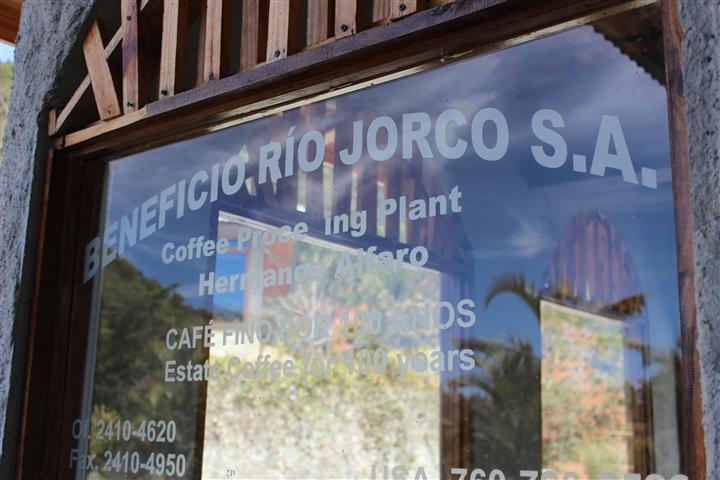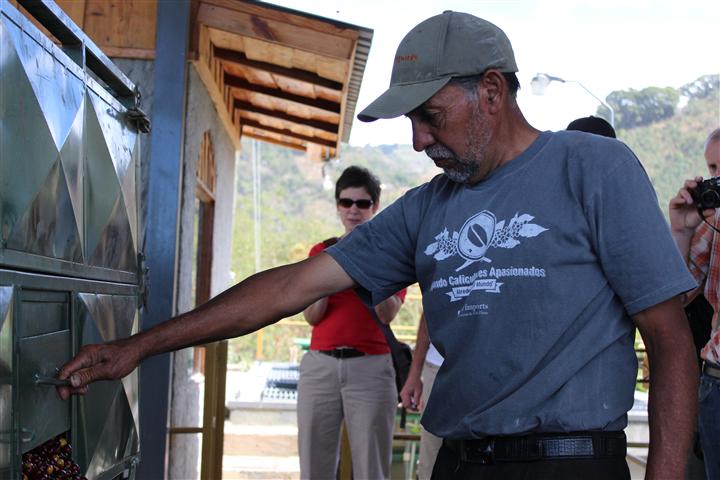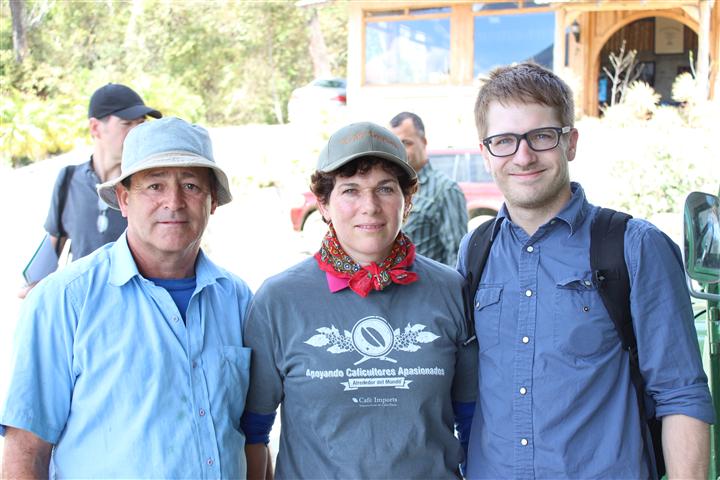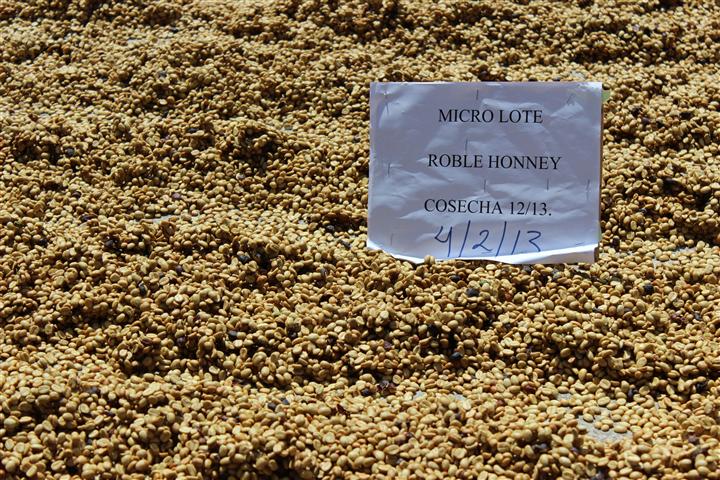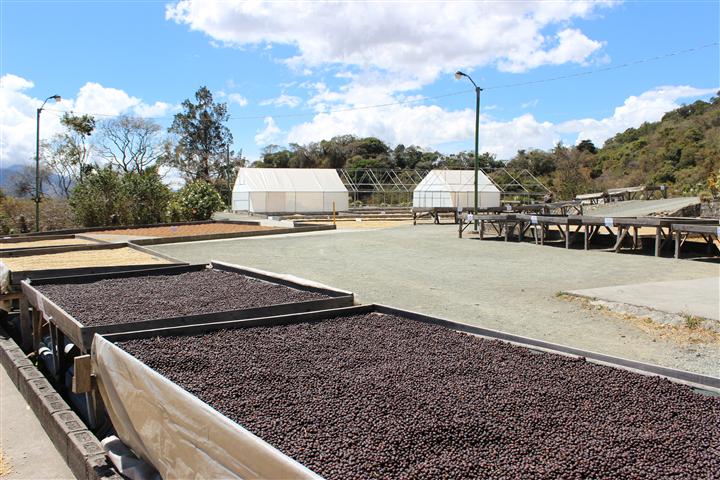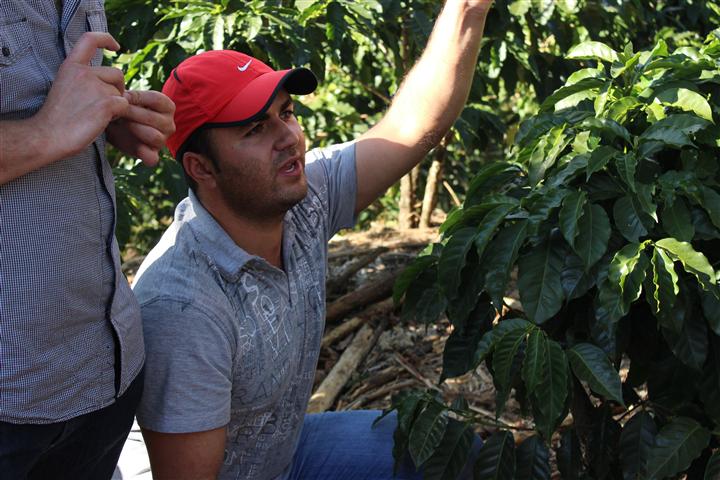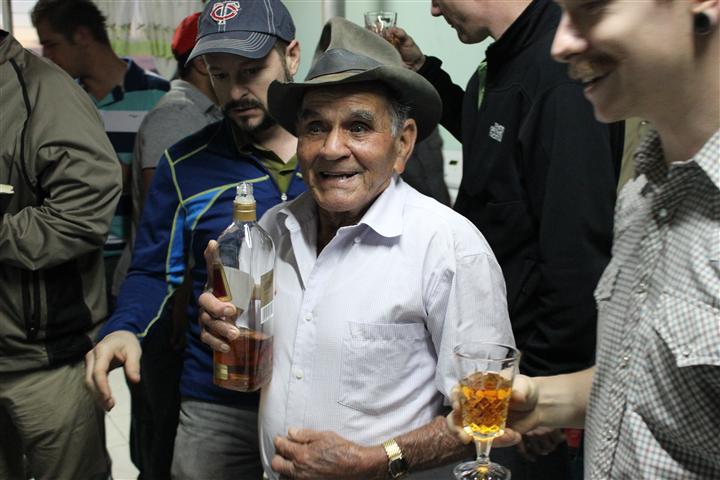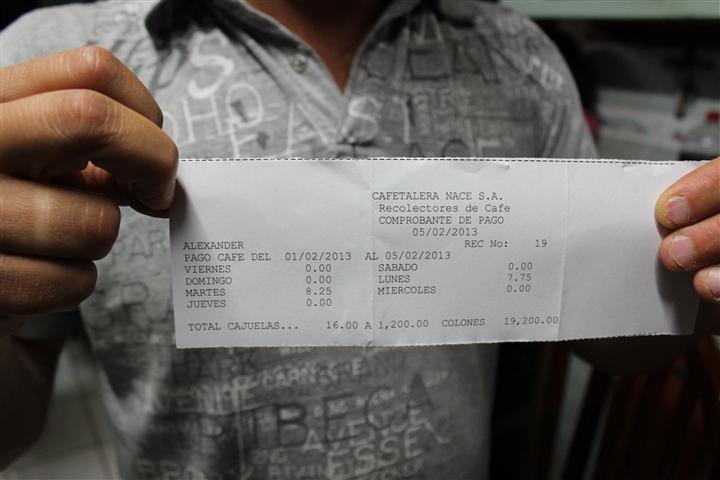Back
Costa Rica: Day 3
Man oh man. After 2 long days, we ended up with another! It’s funny, though, you just can’t rush through these mill and farm visits. You may plan on spending just an hour at a mill or farm, but the people you end up meeting are just as passionate as you, and you just can’t help but stay and talk for hours! Totally worth it…
We started today at an absolutely beautiful mill called Rio Jorco (after our obligatory breakfast at Denny’s, of course). The mill itself is located in Tarrazu, a region traditionally known for its high quality coffee. The mill is located at 1270 meters, and is dedicated to microlot coffees. In fact, Rio Jorco is anticipating producing 100 microlot coffees this year!
The mill was started nearly 100 years ago by Jorge Zeledon Castro, the grandfather of the current owners. He started off as worker at a coffee mill, and eventually worked his way up to buy Rio Jorco.
Today, the mill is managed by Ruddy Monge, an exceptionally generous individual who ended up treating us to lunch and dinner. He said more than once to think of Costa Rica and Rio Jorco as a second home…
Rio Jorco works with about 25 farms located in the area, as well as running their own farm called Los Lobos. Over the past few years, they’ve seen several of the coffees they’ve milled place high at the Costa Rica Cup of Excellence competitions. In fact, while we were there, we watched a coffee cherry delivery from Emilia Quiros Sugura, the owner of Finca El Roble, which placed 3rd last year!
I think the one thing that stood out to me about Rio Jorco would have to the be the cleanliness and organization of the mill. Everything was pristine and well-labeled, truly a model for other specialty mills. Just absolutely gorgeous.
During our time there, we had the opportunity to cup through 24 coffees that were sitting in reposo (essentially resting, waiting to be shipped out), and found some great coffees. Unfortunately, there were a lot of roast issues on the table. The equipment they were using to sample roast was holding them back a bit, and we definitely had some problems objectively evaluating some of the coffees. That being said, we did find some exceptional coffees, and I have a feeling that many more will show significantly better in a more standardized lab. My favorites came from La Chavela, El Salitre, El Bosque, El Comun, and Saga. Definitely keep an eye out for one of these coffees on our offering list in the future.
After watching some coffee being pulped, and checking out the drying patios and dry mill, we decided to go grab some lunch. Rio Jorco was kind enough to treat us to lunch at a local place called La Casa de Mama. We had a set menu of some nice, simple soup, chicken with salsa and cheese, some veggies, and this amazing mashed yuca, made with butter, milk, and cream cheese. Just the way I make my mashed potatoes! Amazing…
We then headed out to one of the farms that processes at Rio Jorco by the name of Finca La Guaria. The farm is one of 3 owned by an 86 year old man named Eduardo Navarro Jimenez and his daughter Ana Maria Navarro Ceciliano. The farms are primarily managed by Jose Luis Navarro, and his brother Juan Carlos.
The farms themselves are pretty cool. They do a good job managing shade and fertilizer additions to maintain both the plant health, as well as the environmental health. One thing to note is that they are finding themselves affected this year by coffee leaf rust. Unfortunately, they will have to use a fungicide spray, but he spray is applied right after harvest, and will have plenty of time (nearly a year) to dissipate before cherries are harvested again.
The Navarros (like most growers) used to think the fungus wouldn’t attack plants over 1200 meters, but climate change has destroyed that line of thinking. It’ll be interesting to see how this all plays out in the coming years.
One particularly awesome thing about the farm was their treatment of seasonal pickers. The farm actually houses the pickers on site, providing beds, electricity, cable television, water, and even internet for free. The only the pickers have to pay for is food. This is great since most of the picking workforce (about 100 people) are migratory workers from other countries. In addition, the farms actually pay significantly over minimum wage to attract good pickers. The farms do currently employ 16 people year round.
After traveling around the farms with Jose Luis, we went up to Eduardo’s house to meet the grandfather. Both Eduardo and his entire family is exceptionally generous! Not only did they invite us into their home, but Eduardo broke out a bottle of Scotch to make us feel at home! In addition, his family whipped up some tortillas from scratch and served them with some rice, beans, and pork for a snack. Best tortillas I’ve ever had. Delicious!
After getting to know the family for a bit, we headed back to La Casa de Mama for a big meet ‘n greet dinner with about 25 producers who all sell their coffee to Rio Jorco. Definitely a cool experience. Seeing all these people bringing their families to an event like this really shows you how focused on family these farmers are. Coffee farming is truly a family enterprise, with multiple generations of farmers sitting around each table. I think this event is the final kick in the pants I needed to take my Spanish learning seriously. I definitely need to be better able to communicate!
By the time dinner ended, it was already 10:00 pm. Once more, a day that promised to be short ended up being long. But once again, I wouldn’t have traded it for the world!
Dave



